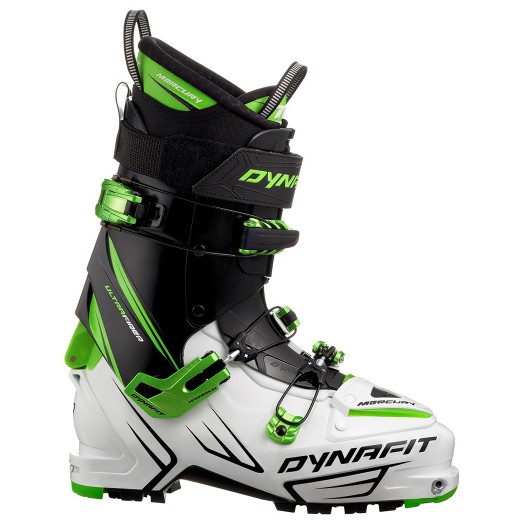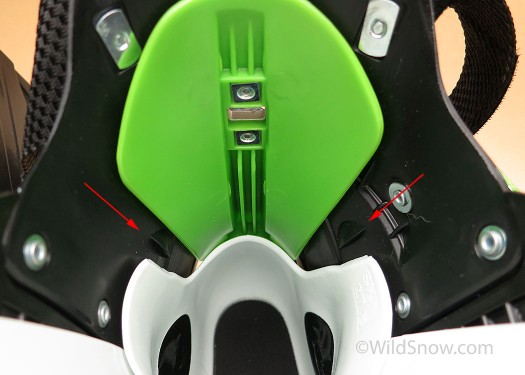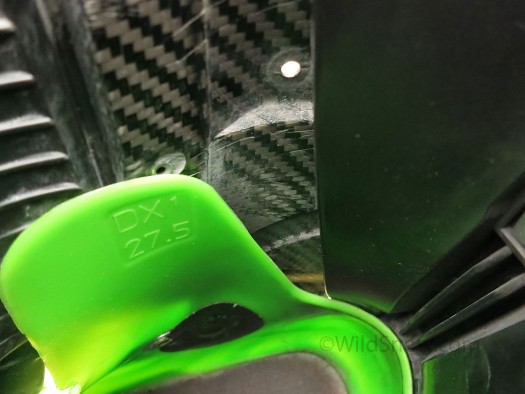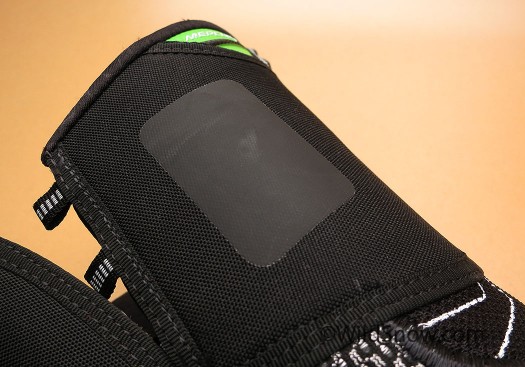I recently got a pair of production Dynafit Mercury boots for testing this winter. As a more inexpensive cousin of the Dynafit Vulcan, I think it will be quite popular. I’m curious how they will compare to the Vulcan. They feel stiff and of course have an impressive walk mode. You can find my review of the prototype Vulcan here.
The Mercury has a lot in common with the Vulcan. Most of the differences lie in the use of various materials, with a few structural changes as well. The lower shell is composed of Grilamid, similar to the Vulcan. The upper cuff, however, utilizes fiberglass reinforced TPU in the rear, and Pebax in the front. The stiffness of the fiber reinforced TPU is impressive. It feels very close to the rock-solid rigidity of carbon (or so-called carbon, which is many cases is just fiberglass with a black cosmetic exterior or small amount of carbon–not mentioning any names). The stiff rear is riveted to softer Pebax in the front to allow the boot to flex open for entry. The front flaps are significantly less stiff than the ones on the Vulcan. This makes it much easier to get in and out of the boot, something that can be a little painful on the Vulcan (although still much easier than an overlap boot). Another important difference I noticed is the use of stops on the upper shell. Common on many AT boots, these stops engage the lower shell when flexed past a certain point. Once they engage, the boots have a much stiffer flex pattern. While they make a boot stiff, these stops can have the effect of making a boot have a funky, non-progressive flex. They may also reduce the walk mode flex by a few degrees if you have the boot buckled while walking. The question is, how will this affect performance on snow?
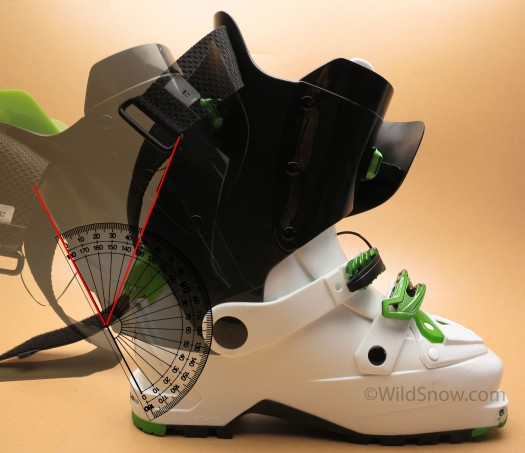
I measured the flex range as 47 degrees in walk mode (shell only). This of course is reduced in real life when a liner and foot are inserted. How much depends on what type of liner you're using. It's probably safe to say you'll never max out the rear-ward movement.
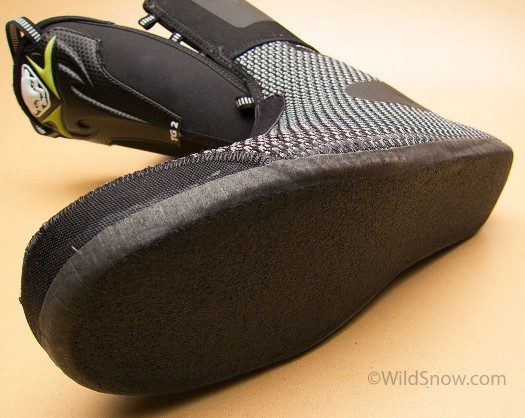
The liner looks nice as well, and features a grippy sole. I still prefer my trusty, toasty Intuitions.
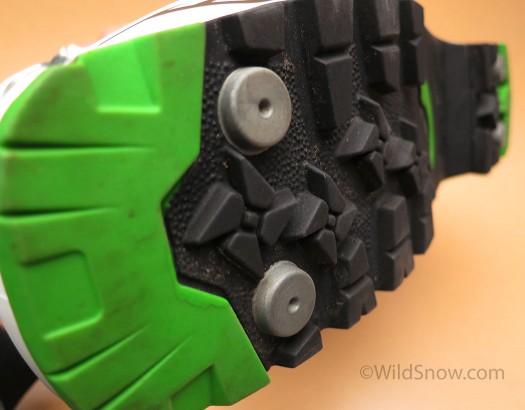
The sole appears to be the same used on my prototype Vulcan. Interestingly, the hard plastic lugs are gone. They are replaced by slightly less hard TPU lugs (the grey cylinders). The original lugs improved performance in non-tech bindings but were rumored to have some patent-infringing issues. These appear to serve the same function although they feel slightly softer.
I’ve gotten out on the Mercurys once, but alas, all I could find was fluffy powder, not exactly conducive to rigorous boot testing. I tried to make up for it by jumping off everything in sight. After more extensive testing, I’ll put up a detailed review. I’m also intrigued to see how they compare to the production Vulcans.
Shell (with tongue): 1300 grams
Liner: 330 grams
Louie Dawson earned his Bachelor Degree in Industrial Design from Western Washington University in 2014. When he’s not skiing Mount Baker or somewhere equally as snowy, he’s thinking about new products to make ski mountaineering more fun and safe.

